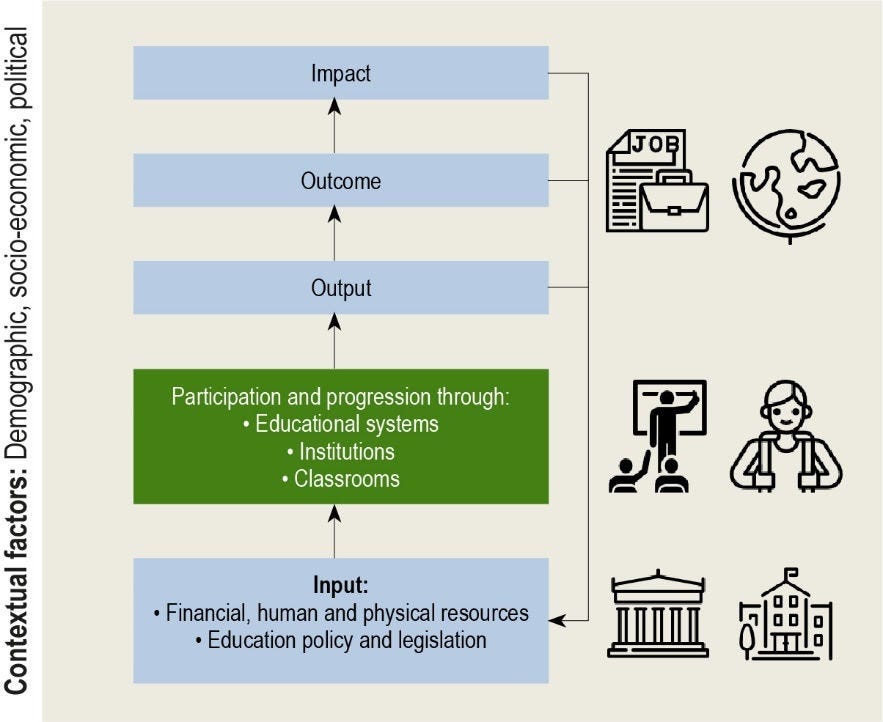As the selected theme for this year’s publication, equity is at the forefront of Education at a Glance 2021. Equity in education means that access, participation and progression to obtain a quality education are available to all and that personal or social circumstances – such as gender, socio-economical or immigrant background – are not obstacles to achieving educational potential. Therefore, a large number of indicators in this year’s edition analyse participation and progression through education, as well as the outcomes of education across a number of equity dimensions: gender, immigrant background or country of origin, and subnational regions. The socio-economic dimension is assessed through an analysis of education indicators by type of educational institution, whether public or private, as well as through the educational finance indicators. A new indicator on the criteria considered to allocate public funds to schools complements this analysis. The indicator sheds light on how resource allocation mechanisms can support efforts towards greater equity in schools, considering differences in size (the number of students, teaching and non-teaching staff, and facilities provided), location (rural, remote or urban), programmes offered (e.g. special educational needs programmes, different vocational fields, a focus on sports or the arts) and characteristics of the student population (for example, specific elements of disadvantage). A second new indicator examines teacher attrition rates among male and female teachers and complements the analysis on gender equity among the teaching profession.
In line with this general focus of the publication, the SDG indicator in Education at a Glance 2021 focuses on the status of Target 4.5 that aims to “eliminate gender disparities in education and ensure equal access to all levels of education and vocational training for the vulnerable, including persons with disabilities, indigenous peoples and children in vulnerable situations” by 2030.
Maintaining equity has been particularly challenging in the context of the COVID-19 pandemic. Disadvantaged students are most likely to struggle with distance learning, and are more at risk of disengaging with education during sustained periods of school closures. Similarly, those with lower educational attainment face higher uncertainty and instability in the job market. A supplemental COVID-19 spotlight released jointly with this publication complements the thematic focus on equity. It explores in greater depth the educational response during the pandemic, analysing the measures implemented across the world to ensure educational continuity and equitable learning during school disruptions (OECD, 2021[1]).
Table A summarises the indicators and chapters that contribute to the analysis of equity in this year’s Education at a Glance.

